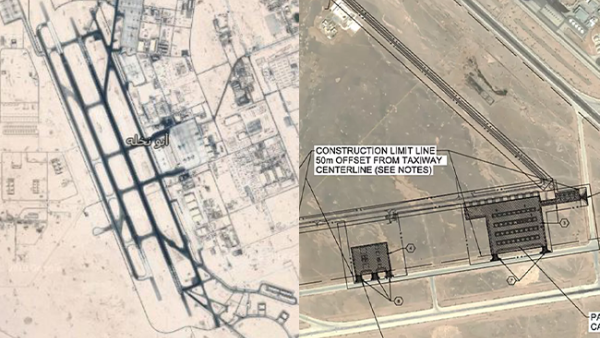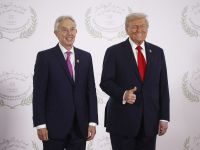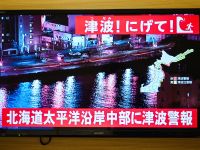By Ty Joplin
U.S. President Donald Trump’s decision to begin his military withdrawal from Syria was interpreted widely as part of his isolationist, ‘America First’ agenda to lessen the U.S.’ overall military presence in the Middle East.
But that may be wrong, or at least too simplistic.
In April 2018, Trump pressured his military to draw up blueprints for a military pullout of Syria. A few months later, plans were released to expand two military bases: one in Jordan and one in Qatar.
The expansion at Jordan’s Muwaffaq Salti Air Base will focus on improving the site’s ability to stage special operations, reconnaissance, surveillance and air strike missions. The planned expansion of the Al-Udeid Base in Qatar will greatly enhance its infrastructure and include housing for 200 officers.
Trump may have ordered a pullout from Syria, but overall U.S. military presence in the region may remain stable as it is redirected to Jordan and Qatar.
The Muwaffaq Salti Air Base Expansion
Planned renovations of the Muwaffaq Salti Air Base (USACE)
On Aug 23, 2018, The U.S. Army Corps of Engineers released plans online for an expansion to a base in an ‘undisclosed’ location about 100 km away from Amman, Jordan. Although they sought to keep the exact base they were looking to expand a secret, satellite photos provided of the base reveal it to be the Muwaffaq Salti Air Base.
The renovations are focused on improving the base’s ability to host, service and launch manned aircraft, armed drones and cargo carriers. Many of the expansions are also focused around staging special forces and close-air support missions.
A new 1,350,000 square feet structure to host close air support/intelligence, surveillance and reconnaissance aircraft will reportedly be the biggest addition to the base. Current housing specifications are made to fit F-15 and F-16 fighter jets in addition to A10 ‘Warthog’ aircraft.
The base’s close proximity to Syria and Iraq make it an ideal staging ground or a transit hub for U.S. military operations and missions into the two countries.
The U.S. defense budget for 2018 included provisions for a $140 million upgrade to the base, which is owned by Jordan’s Royal Jordanian Air Force.
The al-Udeid Base Expansion
Members of the U.S. Air Force at al-Udeid Air Base in Qatar, April 2018 (AFP/FILE)
A few months earlier in July 2018, Qatar announced it would spend $1.8 billion to expand the al-Udeid Air Base; a move hinted at in Jan 2018 when Qatar’s defense minister Khalid bin Mohammed al-Attiyah announced his country would renovate the base and create new dormitories for American soldiers.
More specifically, al-Attiyah said the plans would help building housing for 200 more American officers in addition to expanding the base’s infrastructure and operational abilities.
The al-Udeid Air Base is the U.S.’ largest military base in the Middle East, housing between 10-11,000 troops. According to Pentagon statements, the base “served as the primary staging ground for most air operations in the campaign to defeat ISIS.”
On Jan 13, Pompeo and representatives from Qatar signed a Memo of Understanding to begin finalizing the base’s expansion.
Both expansions come at a time of heightened tension with Turkey, and may be an indirect result of the U.S. seeking more reliable partner nations in the region from which they can project power and launch operations. The U.S. also announced a modest expansion of a base in Greece in light of these tensions.
Part of the blueprint to expand the airbase in Jordan (USACE)
The U.S. maintains about 2,000 boots on the ground in Syria, and though a withdrawal is being carried out, it is unclear whether forces at the strategically located al-Tanf base will pull out at all.
Nevertheless, the pullout is coinciding with a military buildup in two other nearby countries that may mean the total regional military presence remains stable.
This information complicates the popularly held narrative that Trump’s foreign policy is simply isolationist. The real case may be far more complex and requires a look into who is determining the U.S.’ overall foreign policy objectives if there is indeed one person or set of priorities being advanced. There may not be.
Retrenchment Alongside Consolidation
Trump and Pompeo (AFP/FILE)
That plans for two major U.S. base expansions are underway while at the same time Trump seeks to fulfill a campaign promise to withdraw the U.S. from "endless wars" that cost inordinate amounts of money and kill hundreds of thousands, are two difficult moves to put into the same foerign policy narrative.
On the one hand, Trump bemoans the costs of wars that can’t be won yet entangle the U.S. On the other, his military is planning on bolstering the ability to continue carrying out operations in service of these entanglements.
One potential way to make sense of these seemingly contradictory moves is to place them in the context of Trump’s continuous conflicts with his own military and top military advisors.
Trump’s National Security Advisor, John Bolton, is a notorious hawk, especially with regards to Iran. He made his foreign policy debut as George W. Bush’s Ambassador to the U.N. and has pushed for war with Iran for well over a decade.
His role in Trump’s White House has forced him to tone down his rhetoric from pronouncing that he’ll march into Tehran to solemnly stating that “our policy is not regime change.” Nonetheless, he remains dedicated to confronting Iran’s growing regional clout.
Trump’s Secretary of State Mike Pompeo is similarly focused on confronting Iran, exclaiming recently that the U.S. will expel every Iranian soldier currently in Syria. He also defended the re-imposition of sanctions on the country because it is “the destabilizing force in the Middle East today.”
Bolton’s and Pompeo’s sentiments toward Iran are echoed by a chorus of generals and high-level advisors in the U.S. military establishment. As ISIS’ territorial hold on Iraq and Syria dwindled, Pentagon reports began shifting their framing of the U.S.’ justification for maintaining troops in the Middle East from servicing an anti-ISIS mission to one dedicated to countering Iran.
A 2017 report released by the Iran Task Force section of The Jewish Institute for National Security of America (JINSA) entitled “Countering Iranian Expansion in Syria,” was co-authored by six U.S. Army generals and several influential former ambassadors and government officials.
The report said the U.S. “must impose real obstacles to Tehran’s pursuit of total victory by the Assad regime in Syria.” One of those real obstacles has been U.S. boots on the ground deterring Iranian and Iran-aligned paramilitary forces’ advances inside strategic parts of eastern Syria.
American troops in Afghanistan (AFP/FILE)
To make matters more complicated, Trump shares his advisors’ enmity for Iran and his decision to pull out of the nuclear deal and reimpose sanctions on the country speaks to this view. But he does not appear as willing as them to mobilize or re-purpose a large and indefinite military presence against the country.
What’s more, Trump’s dedication to increasing the U.S. military budget also makes his voters happy as they see the military as a trusted, much-needed institution, but this also gives the military the discretionary tools necessary to cement an indefinite presence in the Middle East.
The expansion of the military bases in Jordan and Qatar may be a reflection of that new-found discretionary power, and it cuts against Trump’s isolationist rhetoric.
A strange combination of simultaneously aligned and misaligned foreign policy views is guiding the U.S.’ strategy in the Middle East.
One thing is clear: while Trump issues public orders to pull out of Syria, saying the landscape only offers “sand and death,” his military is preparing for a long-term presence in neighboring countries.







